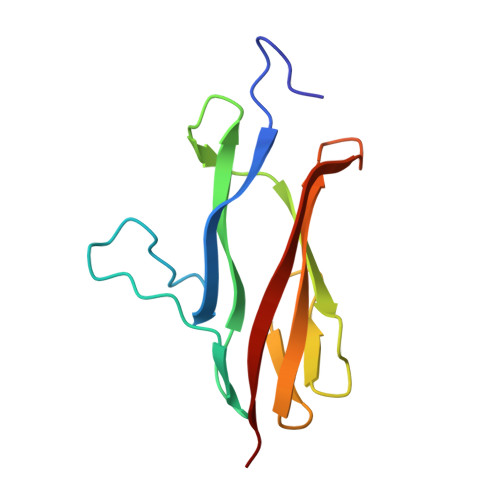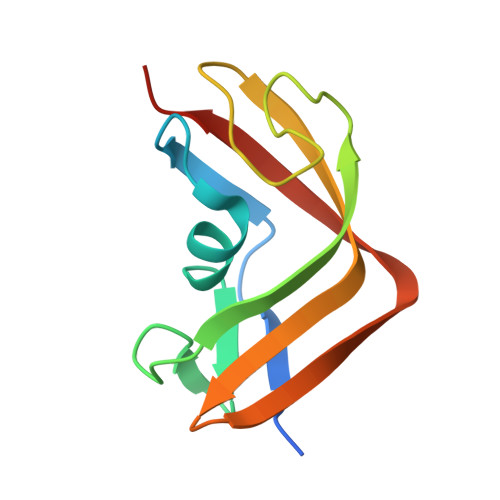Architecture of the Sap S-layer of Bacillus anthracis revealed by integrative structural biology.
Sogues, A., Leigh, K., Halingstad, E.V., Van der Verren, S.E., Cecil, A.J., Fioravanti, A., Pak, A.J., Kudryashev, M., Remaut, H.(2024) Proc Natl Acad Sci U S A 121: e2415351121-e2415351121
- PubMed: 39652757
- DOI: https://doi.org/10.1073/pnas.2415351121
- Primary Citation of Related Structures:
8RX2, 8S80, 8S83, 9G93 - PubMed Abstract:
Bacillus anthracis is a spore-forming gram-positive bacterium responsible for anthrax, an infectious disease with a high mortality rate and a target of concern due to bioterrorism and long-term site contamination. The entire surface of vegetative cells in exponential or stationary growth phase is covered in proteinaceous arrays called S-layers, composed of Sap or EA1 protein, respectively. The Sap S-layer represents an important virulence factor and cell envelope support structure whose paracrystalline nature is essential for its function. However, the spatial organization of Sap in its lattice state remains elusive. Here, we employed cryoelectron tomography and subtomogram averaging to obtain a map of the Sap S-layer from tubular polymers that revealed a conformational switch between the postassembly protomers and the previously available X-ray structure of the condensed monomers. To build and validate an atomic model of the lattice within this map, we used a combination of molecular dynamics simulations, X-ray crystallography, cross-linking mass spectrometry, and biophysics in an integrative structural biology approach. The Sap lattice model produced recapitulates a close-to-physiological arrangement, reveals high-resolution details of lattice contacts, and sheds light on the mechanisms underlying the stability of the Sap layer.
- Structural and Molecular Microbiology, Vlaams Instituut voor Biotechnologie (VIB)-Vrije Universiteit Brussel (VUB) Center for Structural Biology, Vlaams Instituut voor Biotechnologie, Brussels 1050, Belgium.
Organizational Affiliation:

















